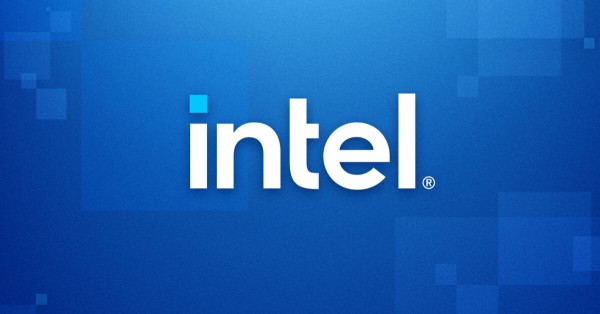In the rapidly evolving landscape of technology, generative AI is emerging as a transformative force across various sectors. Capgemini’s 2024 report, “Harnessing the Value of Generative AI: 2nd Edition,” provides a comprehensive overview of how organizations are leveraging this technology to drive innovation, enhance operational efficiency, and foster growth. This article delves into the key findings and insights from the report, highlighting the increasing maturity, pervasive integration, and strategic benefits of generative AI.
Increased Maturity and Rising Investments in Generative AI
One of the most striking revelations from Capgemini’s research is the significant uptick in investment in generative AI. The report indicates that 80% of organizations have increased their investment in this technology since 2023. Notably, no organization reported a decrease in investment. Larger enterprises are at the forefront of this trend, with nearly a quarter (24%) integrating generative AI into most or all of their operations, a sharp rise from just 6% in the previous year. This surge spans all sectors, including retail, where implementation has more than doubled from 17% to 40%.
Generative AI’s Widespread Integration in Organizational Functions
Generative AI’s influence is not confined to a single domain; it permeates various organizational functions. From sales and marketing to IT, operations, R&D, finance, and logistics, the technology is catalyzing shifts in operational paradigms. The report highlights that the majority of organizations permit the use of generative AI tools, with only 3% enforcing a complete ban on public generative AI tools in the workplace. This widespread adoption is indicative of the technology’s versatility and potential to enhance productivity and customer engagement.
For instance, in the IT domain, the adoption rate has increased to 27% from 4% the previous year. Companies like Hitachi have successfully integrated generative AI tools by leveraging detailed system-design knowledge with Microsoft’s AI services, achieving a 70%–90% success rate in generating application source code. This demonstrates the profound impact generative AI can have on streamlining processes and improving efficiency across various functions.
Realized Benefits and Strategic Changes from Generative AI
Early adopters of generative AI are already reaping tangible benefits.
On average, organizations have reported a 7.8% improvement in productivity and a 6.7% increase in customer engagement and satisfaction over the past year. These gains are prompting organizations to explore new strategic approaches and business models. Generative AI is seen as a key driver of revenue growth and innovation, with 74% of organizations acknowledging its potential to unlock new revenue streams and foster innovation.
Generative AI’s ability to improve productivity is especially notable in larger organizations, which have achieved up to a 25% boost in productivity over the past year through its adoption. The productivity gains tend to scale with the size of the organization, reflecting the higher investment levels observed in larger enterprises.
The Rise and Impact of AI Agents
The emergence of AI agents marks a significant advancement in the generative AI landscape. These autonomous entities are capable of executing tasks independently, enhancing automation and productivity across sectors and business processes. The report reveals that 82% of organizations plan to integrate AI agents within the next 1-3 years. These agents are trusted for specific tasks, such as generating work emails, coding, and data analysis, though there is a consensus on the need for robust guardrails to ensure transparency and accountability.
AI agents promise smoother automation and enhanced productivity.
Nearly three-quarters (71%) of organizations anticipate that AI agents will facilitate higher levels of automation, while 64% believe they will significantly improve customer service, leading to enhanced satisfaction. This highlights the potential of AI agents to not only streamline operations but also improve customer experiences.
Key Recommendations for Maximizing Generative AI Potential
Capgemini’s report outlines several key recommendations for organizations aiming to harness the full potential of generative AI:
- Establish a Robust Data Governance Framework: Ensure data integrity and reliability by strengthening data platforms and cultivating trust. Organizations need to establish new, robust data infrastructure and governance protocols to underpin generative AI initiatives. This includes having documented policies on the source, usage, access, and processing of data in generative AI, as well as shaping standardization and reusability policies for generative AI use cases.
- Cultivate Expertise: Invest in strategic training and talent development to build a deep understanding of the generative AI ecosystem. This involves creating cross-functional project teams, offering specialized learning courses, and fostering a synergy between humans and machines.
- Deploy a Scalable Platform: Manage use cases effectively at scale to drive operational efficiency and cost savings. Generative AI platforms facilitate effective scaling of initiatives, ensuring flexibility, compliance, operational efficiency, value tracking, and cost-effectiveness across diverse business functions.
- Fortify Cybersecurity: Address the increased cybersecurity risks associated with generative AI by implementing robust security measures. This includes adopting the Zero Trust framework, updating security policies, and regularly reinforcing employee training programs.
- Embrace Emerging Trends: Stay ahead of the curve by adopting cutting-edge technologies such as AI agents to boost competitiveness and innovation. AI agents can transform interactions with technology, making them more natural and intuitive, and enabling more meaningful and productive interactions.
Generative AI Applications in the Telecom Sector
Generative artificial intelligence (AI) is finding a home in organizations such as telecommunications companies, which are significantly increasing their investments in this technology. Capgemini’s report reveals that the telecom sector is actively exploring and implementing generative AI across various use cases:
- Creation of New Personalized Services and Offerings: Generative AI is being piloted and implemented to create new personalized services and customer-service interactions. About 28% of telecom companies are in the pilot/proof of concept stage, while 18% have moved to implementation.
- Generative Network Design and Architectures: Telecom companies are leveraging generative AI to identify the most efficient and effective network configurations. This is being piloted by 28% and implemented by 32% of the companies surveyed.
- Restoration of Old Media: The restoration of old media using generative AI is another promising area, with 27% of companies in the pilot stage and 31% in the implementation phase.
- Call-Center Analytics: Generative AI is being used to enhance call-center analytics, improving customer service and operational efficiency. This use case is being piloted by 37% and implemented by 24% of telecom companies.
- Text-to-Video Generation/Filmmaking: Generative AI is also making inroads into creative domains such as text-to-video generation and filmmaking, with 27% of telecom companies piloting and implementing these capabilities.
Pascal Brier, Capgemini’s chief innovation officer, noted, “Generative AI is starting to transform business and organizations are already seeing concrete growth in revenue, whilst also accelerating innovation. As a result, rather than solely focusing on cost optimization, businesses are actively exploring new avenues to leverage its capabilities and drive value creation.”
Addressing Environmental Impact in Generative AI Deployment
As organizations deploy generative AI at scale, they must also consider the environmental impact. The report emphasizes the need to evaluate the business value of generative AI alongside its environmental consequences, such as greenhouse gas emissions, electricity usage, and water consumption. Only about a third of organizations currently monitor these metrics, underscoring the need for more comprehensive tracking and mitigation strategies.
Organizations are developing guidelines for responsible use, transitioning to more energy-efficient hardware, and investing in renewable energy to mitigate the environmental impact. However, there is still room for improvement in areas like optimizing training algorithms and offsetting emissions through carbon credits.
Conclusion: Embracing the Generative AI Future
Generative AI is no longer futuristic but a present-day reality driving significant changes across industries. Capgemini’s 2024 report underscores its accelerated adoption, strategic benefits, and transformative potential. Organizations that proactively embrace this technology, invest in the necessary infrastructure, and cultivate the required expertise will be well-positioned to lead in the era of AI-driven innovation.
The future of generative AI holds immense promise, from enhanced operational efficiency and customer engagement to the rise of autonomous AI agents and the strategic shifts they bring. By following the recommendations outlined in Capgemini’s report, organizations can unlock the full potential of generative AI and navigate the complexities of this rapidly evolving technology landscape.
For more detailed insights and sector-specific case studies, download Capgemini’s comprehensive report here.































